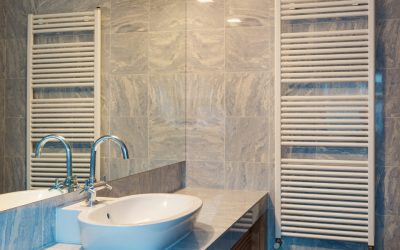
Many homeowners wonder how to stop condensation build-up on their double-glazing or prevent misting in their double-glazed window panels. Misting and condensation are the most common double glazing problems, so it helps to understand how moisture gets into these sealed units and what you can do to fix it.
Condensation build-up on windows and glass doors is almost inevitable for homeowners living in the UK. We live in a climate with wet winters and warm summers with high humidity levels. Once autumn rolls around and the temperatures drop, you start to notice mist and water droplets forming in the corners of cold window panes or even across double-glazed panels.
In most cases, you can keep on top of mist build-up with a quick wipe-down of your windows each morning. However, the moisture build-up can lead to black mould growth, which causes numerous respiratory issues and illnesses if neglected.
What causes window condensation?
Condensation will form on the inside of a window when the colder air outdoors cools the glass, causing the warmer air indoors to condense moisture on the surface of the glass, leading to condensation forming.
When a lot of condensation forms, water droplets take shape and become heavy. This causes water drips to run off the window surface and onto window frames and ledges. This was a significant problem many years ago before uPVC was invented because windows were single-glazed and had wooden frames.
The condensation from single-glazed windows would eventually cause the wooden frames to rot and the windows to become unstable and potentially dangerous.
How double glazing reduces condensation
The first double-glazed units used aluminium frames, but uPVC frames replaced these early versions, and they are not only cheaper, but uPVC frames help to retain heat within a room.
Coupled with sealed double-glazed glass panels to prevent moisture and air from getting between the glass panes, modern uPVC double glazing contains tiny silica balls made from silica gel or, in some cases, calcium chloride in the spacer bars to absorb moisture.
While these desiccant materials help to absorb any trapped moisture during the sealing process, they also help to deal with any future moist air that finds its way inside. While this process remains effective for a good few years, some lower quality double glazing units can start to leak sooner – even within five years of installation.
Double glazed windows will degrade over time, so if you have had your double glazing for a long time and you notice that the window seals have started to crack, shrink or perish, or the uPVC frames have warped or have developed cracks, now is the time to consider replacement windows.
Where is condensation forming?
Condensation can appear on double glazing in several different locations. It can help to identify where it is forming so you can assess how easy it will be to eliminate.
Check for condensation build-up:
- Cross section of a double-glazed unit
- Cross section of a double-glazed unit and parts that make up the unit
- On the external glazed faces of window
- On the internal glazed faces of window
- On the surface of glazing in the air gap between the glazed units
Some easy fixes include not drying wet laundry indoors on airers or radiators. If you notice that condensation appears only while drying laundry indoors, then line drying outdoors or using a tumble dryer will prevent condensation build-up on your double glazing.
Misting on the inside of your double-glazed window panels indicates that the seal has been compromised. In this case, it can be impossible to prevent misting and moisture build-up between the panes, so the best thing to do is to replace the sealed unit. You can replace a single failed unit without needing to replace all of your windows and frames.
Condensation on internal window panes
If you know that moisture inside your double-glazed window isn’t caused by drying wet laundry indoors, it could be that there is too much humidity in the room with the issue or in the property as a whole. High humidity rooms such as kitchens or bathrooms often have this problem.
Improving the air circulation in the room or throughout the house is a simple way to resolve this issue. In homes with little to no air circulation, the trapped air will be full of moisture. It will be released onto cold window panes in the form of condensation.
Opening your windows for at least an hour per day to release heavy, trapped moisture-rich air and exchange it for fresh air can help prevent condensation formation on internal double-glazed window panes.
Opening window vents can also help to eliminate this problem. Modern uPVC double glazing comes with built-in vents for this purpose. They can enable you to release moist air from inside your home without having to leave your windows open.
You can get plenty more free tips, and information about misted double-glazed via this guide, that will give you more in-depth guidance.


